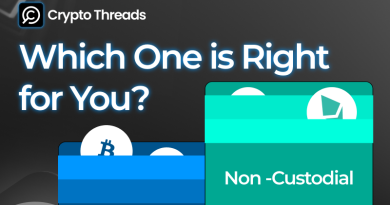What is a Spot Bitcoin ETF?
A spot Bitcoin exchange-traded fund (ETF) is an investment fund that directly tracks the price of Bitcoin.
Unlike futures-based ETFs, which derive their value from contracts that speculate on Bitcoin’s future price, a spot Bitcoin ETF holds the actual cryptocurrency. The term “spot” refers to the actual purchase and ownership of the underlying asset.
The ETF provider purchases and stores Bitcoin to mirror its value. Investors can then buy and sell shares of the ETF on stock exchanges, gaining exposure to Bitcoin’s price movements without directly owning the cryptocurrency themselves.
Why Would Investors Choose a Spot Bitcoin ETF?
Investors may choose a spot Bitcoin ETF for several compelling reasons:
Direct Bitcoin Exposure: A spot Bitcoin ETF provides direct exposure to Bitcoin’s price movements. Investors can gain cryptocurrency exposure without worrying about purchasing and storing it themselves.
Convenience: Investing in a spot Bitcoin ETF offers convenience for investors who prefer traditional investment vehicles like ETFs over managing private keys and digital wallets.
Liquidity: ETFs trade on stock exchanges, providing liquidity and ease of buying and selling compared to purchasing and selling actual Bitcoin on cryptocurrency exchanges.
Diversification: Investors seeking to diversify their portfolios may consider spot Bitcoin ETFs as a way to include cryptocurrency market exposure alongside traditional asset classes.
Risk Management: Some investors view spot Bitcoin ETFs as a method to manage risks associated with cryptocurrency market volatility. While ETFs remain subject to market forces, they might be perceived as less risky than holding cryptocurrency directly.
When Were Spot Bitcoin ETFs Approved in the US?
The United States Securities and Exchange Commission (SEC) approved spot Bitcoin ETFs on January 10, 2024. On this historic day, eleven spot Bitcoin ETFs received approval from Bitwise, Grayscale, Hashdex, BlackRock, Valkyrie, BZX, Invesco, VanEck, WisdomTree, Fidelity, and Franklin. Two of these ETFs represented conversions from previous products.
These spot Bitcoin ETFs began trading on January 11, 2024.
Approval Process Chaos
The SEC approval process for spot Bitcoin ETFs experienced significant confusion and chaos. On January 9, 2024, the SEC’s account on social media platform X was compromised due to an unprotected phone number. The perpetrator posted a message announcing the approval of spot Bitcoin ETFs in general, along with a quote from SEC Chair Gary Gensler supporting them, causing a brief spike in Bitcoin’s price. The SEC noted that its account had been compromised and that ETFs had not been approved at that time.
The following day brought additional confusion when the Chicago Board Options Exchange appeared to jump the gun by announcing that ETFs would begin trading the next day. The SEC also inadvertently revealed an omnibus document approving all spot Bitcoin ETFs before market close and did not confirm the document’s authenticity until it was uploaded to the correct section of its website. However, after all this drama, the ETFs were indeed approved.
Are Spot Bitcoin ETFs Better Than Bitcoin Futures ETFs?
Both spot Bitcoin ETFs and Bitcoin futures ETFs have received approval in the United States. Each type of ETF offers distinct advantages and considerations, and what might be considered “better” varies depending on individual circumstances. Here are key points to consider for each type:
Spot Bitcoin ETFs
Direct Ownership: Spot Bitcoin ETFs provide direct Bitcoin ownership, meaning the fund holds the actual cryptocurrency. This appeals to investors seeking direct exposure to Bitcoin’s price movements.
Simplicity: Spot Bitcoin ETFs feature straightforward structures that track Bitcoin’s spot price. Investors need not navigate the complexities of futures contracts.
Bitcoin Futures ETFs
Speculative Opportunities: This ETF type allows investors to gain Bitcoin exposure through futures contracts, which can introduce speculative opportunities. However, this also comes with increased complexity and potential risks.
Leverage: Some Bitcoin futures ETFs may incorporate leverage, amplifying both potential gains and losses.
Market Dynamics: Bitcoin futures ETFs may be influenced by factors such as futures market structure, roll yields, and the term structure of futures contracts.
Ultimately, choosing between spot Bitcoin ETFs and Bitcoin futures ETFs depends on factors including the investor’s risk appetite, familiarity with financial derivatives, and preference for direct ownership of the underlying asset.
How Do Investors Access Spot Bitcoin ETFs?
Investors can access spot Bitcoin ETFs through traditional stock exchange platforms such as Cboe, NASDAQ, and the New York Stock Exchange (NYSE).
Investment applications such as Robinhood also allow users to purchase spot Bitcoin ETFs.
It remains important to note that investors should conduct thorough research, understand the risks involved, and consider their investment goals before choosing any investment vehicle, including spot Bitcoin ETFs.



